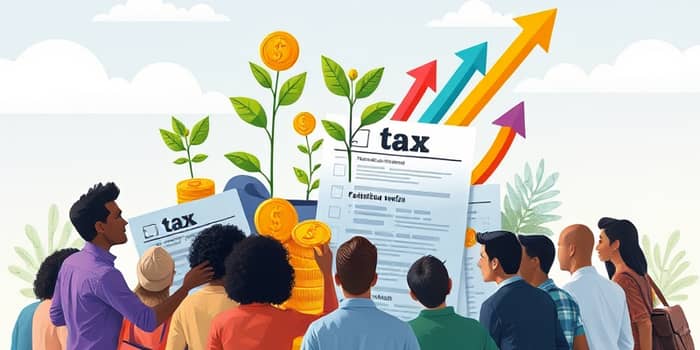
The 2025 tax year brings new opportunities to lower your taxable income effectively and seize every deduction available. By understanding the latest thresholds, critical rules, and strategic approaches, you can maximize your tax refund potential and minimize what you owe.
Whether you take the standard deduction, itemize expenses, or leverage specialized credits, a well-informed strategy can transform your tax filing experience from daunting to empowering.
Tax deductions are provisions that reduce your taxable income directly. You start by calculating your total income, subtract eligible deductions, and then apply tax rates to the resulting taxable income.
Each dollar you deduct shrinks your tax base. The more you claim—within legal limits—the less tax you owe or the larger your refund becomes. Deductions come in various forms: standard, itemized, above-the-line, and specialized adjustments.
The standard deduction remains the most popular choice because of its simplicity and size. For 2025 filings (due in 2026), the amounts have risen again, offering more relief without requiring receipts or detailed records.
Seniors and those who are legally blind qualify for an additional amount. However, dependents typically receive a lower deduction. Remember, you cannot claim both the standard and itemized deductions.
Itemizing makes sense only if your allowable expenses surpass the standard deduction. Common categories include:
Detailed records and receipts are essential. If your total itemized expenses edge past the standard deduction, you could unlock significant savings.
Above-the-line deductions reduce your adjusted gross income (AGI) regardless of whether you itemize. Lowering your AGI can increase eligibility for other credits and phase-outs.
Key adjustments include IRA contributions, Health Savings Account (HSA) contributions, student loan interest up to $2,500, educator expenses, and self-employed health insurance premiums. Tracking these can deliver strategize your deductions with confidence as you file.
Tax credits provide a dollar-for-dollar reduction in your tax owed, making them incredibly powerful.
By combining deductions with credits, you can achieve claim valuable energy credits and more, supercharging your tax benefit.
Entrepreneurs and gig economy workers have access to business-related deductions that employees do not.
Maintaining clear invoices and logs ensures you can support each claim and secure keep meticulous records of receipts when audited.
The standard deduction increased by $400 for singles and $800 for joint filers compared to 2024. Despite rising expenses, fewer than 10% of taxpayers now itemize, a sharp decline since the 2018 reforms.
Marginal tax rates for 2025 remain structured across seven brackets, topping out at 37% for singles earning over $626,350 and joint filers over $751,600. Future legislative debates over sunset clauses for key provisions could reshape your planning strategy.
Thorough records are the foundation of a smooth filing process. Use digital tools or physical binders to organize receipts, contribution acknowledgments, and payment statements. Charitable gifts above $250 require written acknowledgment.
Review IRS publications for current AGI thresholds, and consider tax software that flags unclaimed deductions. Early preparation allows time to gather missing documentation and consult professionals if needed.
Certain taxpayers face unique rules: married filing separately couples, nonresident aliens, and dual-status filers often cannot claim the standard deduction or face different limitations. Disaster relief claims and home-sale exclusions offer relief in extraordinary circumstances.
Review your circumstance each year to ensure compliance and opportunity capture.
The Tax Cuts and Jobs Act of 2017 nearly doubled the standard deduction but capped state and local tax deductions (SALT). These changes reduced itemizers dramatically, particularly among lower and middle-income households.
Sunset provisions loom in 2025; extensions or reforms could alter deduction values, phase-outs, and eligibility rules. Staying informed on legislative updates ensures you adapt quickly.
By mastering the distinctions between standard, itemized, and above-the-line deductions—and layering in powerful credits—you can craft a tax plan that maximizes benefits and minimizes stress. The 2025 adjustments favor simplicity and transparency, but those who dive deeper will uncover additional savings.
Embark on your tax-filing journey with clarity, organization, and confidence. With energy credits for clean upgrades and business deductions for entrepreneurs, every taxpayer can unlock new financial growth. Start early, track diligently, and let nuanced strategies pay off at filing time.
References













